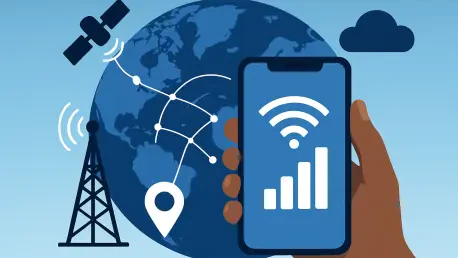In an era where mobile technology underpins nearly every aspect of modern life, from personal communication to global commerce, the GSMA emerges as a pivotal force shaping the telecommunications landscape. Founded in 1987 as “Groupe Spécial Mobile,” this organization has transformed from a regional standardization body into a global powerhouse, representing over 750 mobile operators and nearly 400 technology companies across the world. Its mission transcends mere technical advancement, aiming to drive innovation, establish universal standards, and foster collaboration that turns cutting-edge ideas into tangible solutions for billions. The GSMA’s influence touches everything from the rollout of 5G networks to ensuring connectivity in remote regions, making it a linchpin for economic growth and social progress. This article explores the multifaceted role of the GSMA, delving into its historical milestones, current initiatives that redefine industry norms, and its visionary approach to future connectivity challenges. By uniting competitors, advocating for balanced policies, and prioritizing sustainability, the GSMA stands as a trusted leader navigating the complex interplay of technology and humanity. Let’s examine how this organization continues to mold the future of global telecommunications with unparalleled impact.
Shaping the Past: A Legacy of Milestones
The roots of the GSMA trace back to a pressing need in the 1980s for a unified mobile communication standard across Europe, a challenge that birthed the revolutionary GSM framework by the early 1990s. This standard didn’t just enable digital voice calls and SMS; it laid the groundwork for seamless cross-border connectivity, marking a turning point in how the world communicates. The success of GSM catapulted the organization into a position of global influence, demonstrating the power of standardized technology to unify disparate systems. Beyond its initial technical triumph, this milestone set a precedent for the GSMA’s role as a catalyst for industry-wide transformation, proving that collaboration could drive progress on an unprecedented scale.
As the organization evolved, rebranded to GSMA in 1995 to signify its expanding international reach, it guided the mobile sector through successive technological waves—from 2G to 4G. Each generation bore the imprint of GSMA’s commitment to interoperability, ensuring users could rely on consistent service no matter their location. Innovations like the SIM card, a brainchild of its standardization efforts, redefined user mobility by allowing easy network switching. This historical journey reflects not just technological advancement but a deepening mission to make mobile technology accessible and reliable, a foundation that continues to inform the GSMA’s approach to modern challenges in the digital era.
Pioneering Innovation: Fueling Technological Breakthroughs
At the heart of the GSMA’s mission lies a relentless drive for innovation, positioning it as a facilitator rather than a creator of technology, bringing together operators, vendors, and researchers to push boundaries. Its influence spans from the early days of GSM to the current widespread adoption of 5G, while already exploring the horizons of 6G development. Programs like Open Gateway, introduced a couple of years ago, exemplify this by standardizing network APIs, enabling developers to integrate mobile capabilities into applications with ease. This initiative not only sparks creativity in app development but also creates new financial opportunities for network providers, illustrating how the GSMA bridges technical innovation with market impact.
Furthering its role as an innovation engine, the GSMA champions emerging technologies that promise to reshape the telecom landscape, including AI-driven network management, blockchain for secure transactions, and edge computing for faster data processing. Its advocacy for Open RAN architectures stands out as a push for flexibility, allowing diverse vendors to contribute to network infrastructure and reducing dependency on single providers. By fostering forums for dialogue and collaboration on these cutting-edge fields, the GSMA ensures that novel ideas swiftly transition from research labs to real-world deployment, keeping the industry agile and responsive to ever-evolving global demands.
Standardizing the Future: Ensuring Global Interoperability
A cornerstone of the GSMA’s enduring impact is its dedication to setting global standards that guarantee seamless interaction between networks and devices across continents. Historical achievements like the development of the SIM card and international roaming protocols have made mobile connectivity a universally consistent experience, eliminating barriers for users traveling or switching providers. This commitment to interoperability has been vital in preventing the chaos of fragmented systems, ensuring that technological advancements benefit everyone equally, from urban centers to remote locales, by maintaining a cohesive mobile ecosystem.
Through strategic alliances with entities like 3GPP, the GSMA continues to shape standards for next-generation networks, including the ongoing refinement of 5G and preliminary frameworks for 6G. These efforts are crucial in avoiding costly incompatibilities that could stifle innovation or limit access. By aligning industry players on shared technical specifications, the GSMA ensures that new technologies are adopted smoothly and efficiently worldwide. This focus on standardization remains a linchpin for consumer trust and business confidence, as it guarantees reliability and accessibility in an increasingly connected digital environment.
Influencing Policy: A Voice for the Industry
The GSMA wields significant influence in global policy arenas, acting as the unified advocate for the telecommunications sector on critical issues that shape its growth. At forums such as the ITU World Radiocommunication Conference, it lobbies for harmonized spectrum allocation, essential for expanding network capacities like 5G through bands such as 6 GHz. Securing adequate spectrum resources is fundamental to meeting the skyrocketing demand for data, enabling operators to deliver faster, more reliable services. This advocacy underscores the GSMA’s role in ensuring the industry has the foundational tools to innovate without regulatory hindrance.
Beyond spectrum concerns, the GSMA engages with governments and regulators on a range of issues, including taxation policies, data privacy frameworks, and cybersecurity measures. Leveraging insights from GSMA Intelligence, it constructs well-researched, evidence-based positions that balance the need for technological progress with user protection. This dual focus helps craft policies that foster innovation while safeguarding public interest, positioning the GSMA as a credible and indispensable partner to policymakers. Its efforts ensure that the regulatory environment supports sustainable growth for the mobile industry on a global scale.
Uniting Stakeholders: The Power of Convening
The GSMA’s ability to bring the telecommunications industry together is epitomized by its flagship Mobile World Congress (MWC) events, held in key cities like Barcelona, Shanghai, and Las Vegas. These gatherings serve as the sector’s premier platforms, where groundbreaking technologies are unveiled, significant business agreements are forged, and the annual agenda for mobile innovation is defined. MWC isn’t merely a conference but a dynamic hub where ideas converge, partnerships form, and the future of connectivity takes shape, drawing thousands of industry leaders and innovators each year to collaborate and inspire.
Beyond these high-profile events, the GSMA facilitates alignment on pressing challenges such as IoT security, mobile money interoperability, and the development of future network standards. By creating neutral spaces for dialogue, it enables even the fiercest competitors to work toward shared objectives, turning potential conflicts into collective progress. This convening power is a distinctive strength, fostering a unified approach to complex issues that no single entity could tackle alone. The result is an industry that moves forward cohesively, driven by a common vision of leveraging mobile technology for global benefit.
Closing Gaps: Championing Digital Inclusion
Digital inclusion stands as a fundamental pillar of the GSMA’s mission, particularly in underserved and emerging markets where connectivity can transform lives. Through its Mobile for Development (M4D) unit, the organization addresses barriers such as affordability, digital literacy, and access to relevant content, striving to bring the unconnected into the digital fold. Initiatives targeting rural communities and marginalized groups ensure that mobile technology isn’t a luxury but a tool for empowerment, enabling access to education, healthcare, and economic opportunities that were previously out of reach in many regions.
A powerful testament to this commitment is the Mobile Money program, which has driven financial inclusion by supporting over 1.6 billion registered accounts as of recent data. Platforms like M-PESA have revolutionized access to banking services, allowing users in remote areas to save, send, and spend money securely via their phones. Additionally, the GSMA prioritizes gender equality and localized content to ensure inclusivity across diverse populations. These efforts highlight a broader vision of connectivity as a catalyst for social equity, ensuring that the benefits of mobile technology are distributed widely and equitably across the globe.
Greening the Grid: Leading on Sustainability
Sustainability forms a critical dimension of the GSMA’s strategy, reflecting a deep commitment to reducing the environmental impact of the mobile industry. The organization spearheads the sector’s ambitious goal of achieving Net Zero carbon emissions by 2050, promoting the adoption of renewable energy for network sites through initiatives like Green Power for Mobile. Enhancing energy efficiency in network operations is another focus, minimizing the carbon footprint of an industry that powers billions of devices and connections worldwide, thus aligning with broader global climate goals.
Equally significant is the push for a circular economy to tackle the growing issue of electronic waste. By advocating for device recycling and sustainable manufacturing practices, the GSMA addresses the lifecycle impact of mobile technology. Moreover, it emphasizes how connectivity solutions like smart grids and optimized logistics can reduce emissions in other sectors, showcasing the ripple effect of mobile innovation on environmental stewardship. This holistic approach positions the GSMA as a leader in ensuring that technological progress does not come at the expense of the planet, but rather contributes to a more sustainable future.
Fostering Trust: A Neutral and Reliable Partner
Operating as a non-profit entity, the GSMA’s neutrality is a cornerstone of its credibility, enabling it to serve as an unbiased platform where competitors can collaborate on shared challenges. This impartiality is especially crucial when navigating sensitive topics like data privacy, network security, and regulatory compliance, where conflicting interests often arise. By maintaining a balanced stance, the GSMA builds trust among stakeholders, ensuring that discussions and decisions prioritize the collective good over individual agendas, fostering an environment of mutual respect and cooperation.
This trust is reinforced by transparent governance and a reliance on data-driven advocacy, which enhances the GSMA’s reputation among industry players, from major telecom operators to emerging startups. Its expertise in crafting security and privacy frameworks further solidifies its role as a reliable partner, particularly in an era where mobile networks handle vast amounts of sensitive information. Governments and regulators also depend on the GSMA’s insights to shape policies that protect users while enabling innovation. This foundation of trust ensures that the organization remains a vital force in steering the industry toward integrity and accountability.
Looking Ahead: A Vision for Seamless Connectivity
The GSMA’s forward-looking perspective envisions a world where 5G technology achieves its fullest potential, unlocking advanced capabilities such as immersive extended reality experiences and ultra-precise positioning for diverse applications. Already, efforts are underway to define the contours of 6G, with global research collaborations and spectrum advocacy setting the stage for the next leap in connectivity. This proactive stance ensures that the mobile industry remains at the cutting edge, ready to meet future demands for speed, reliability, and innovative use cases that redefine how societies function.
Emerging technologies like AI integration for smarter networks and satellite-based solutions for non-terrestrial connectivity are also central to this vision, promising coverage that reaches even the most remote corners of the earth. Scaling programs like Open Gateway will cultivate a thriving developer ecosystem, driving app innovation, while persistent efforts to bridge the digital divide guarantee equitable access. By prioritizing these strategic areas, the GSMA ensures that mobile technology continues to underpin the digital economy, transforming industries and improving lives through a connected, inclusive, and sustainable future.
Reflecting on Impact: Steps Toward Tomorrow
Looking back, the GSMA’s journey reveals a remarkable transformation from a niche standardization group to a global leader that has shaped every facet of mobile connectivity. Its historical strides in establishing GSM and subsequent standards paved the way for a unified digital world, while initiatives like Mobile World Congress became the epicenter of industry progress. Advocacy efforts influenced policies that supported growth, and programs for digital inclusion and sustainability addressed pressing societal needs with tangible results.
Moving forward, the focus should shift to actionable strategies that amplify this legacy. Strengthening partnerships to accelerate 6G research, expanding digital literacy programs in underserved regions, and doubling down on renewable energy adoption for networks are critical next steps. Stakeholders must also prioritize robust cybersecurity frameworks as connectivity deepens, ensuring trust remains intact. By continuing to unite diverse voices and champion innovation with purpose, the GSMA’s past achievements can guide a path to a future where mobile technology empowers every corner of the globe with equity and resilience.









